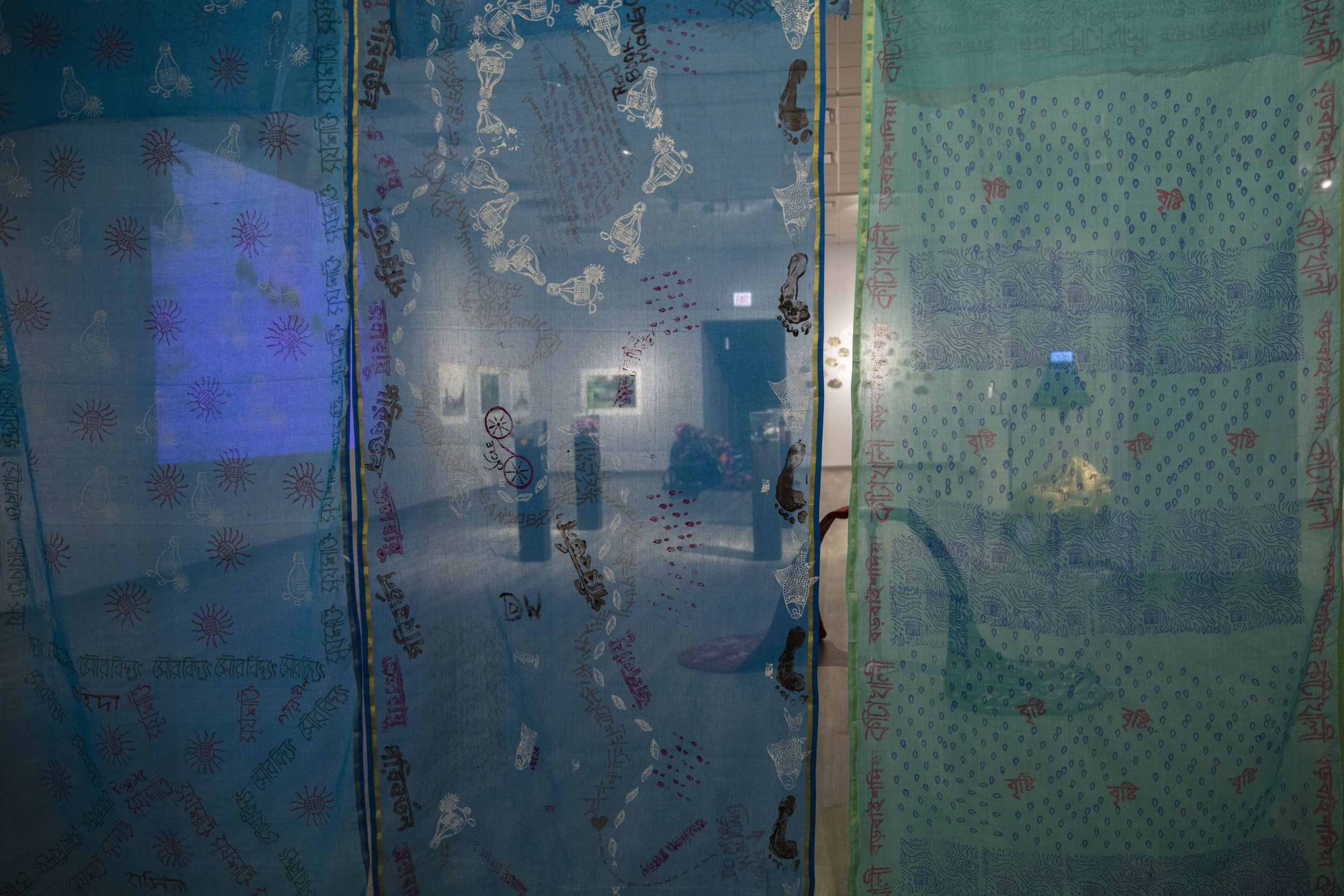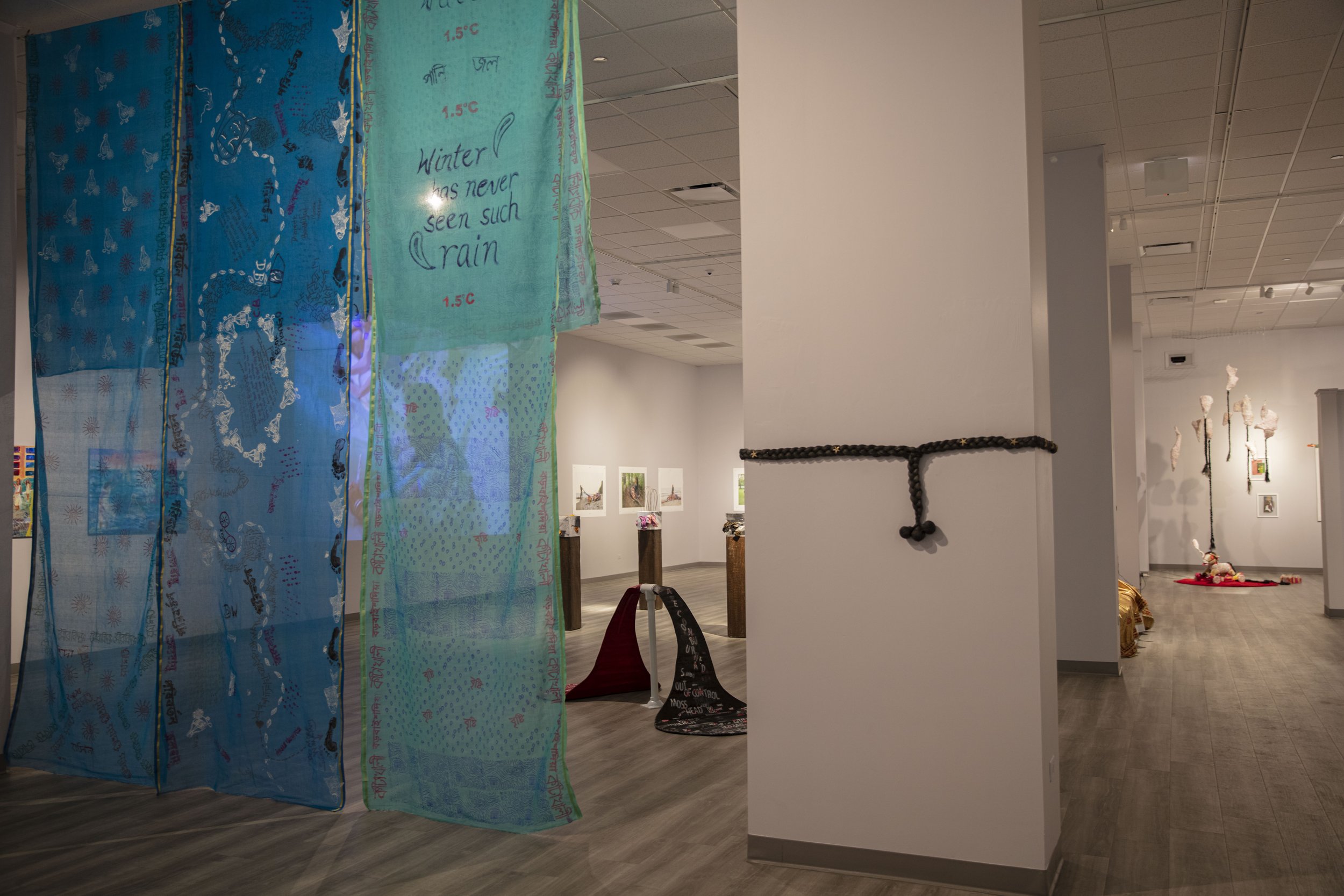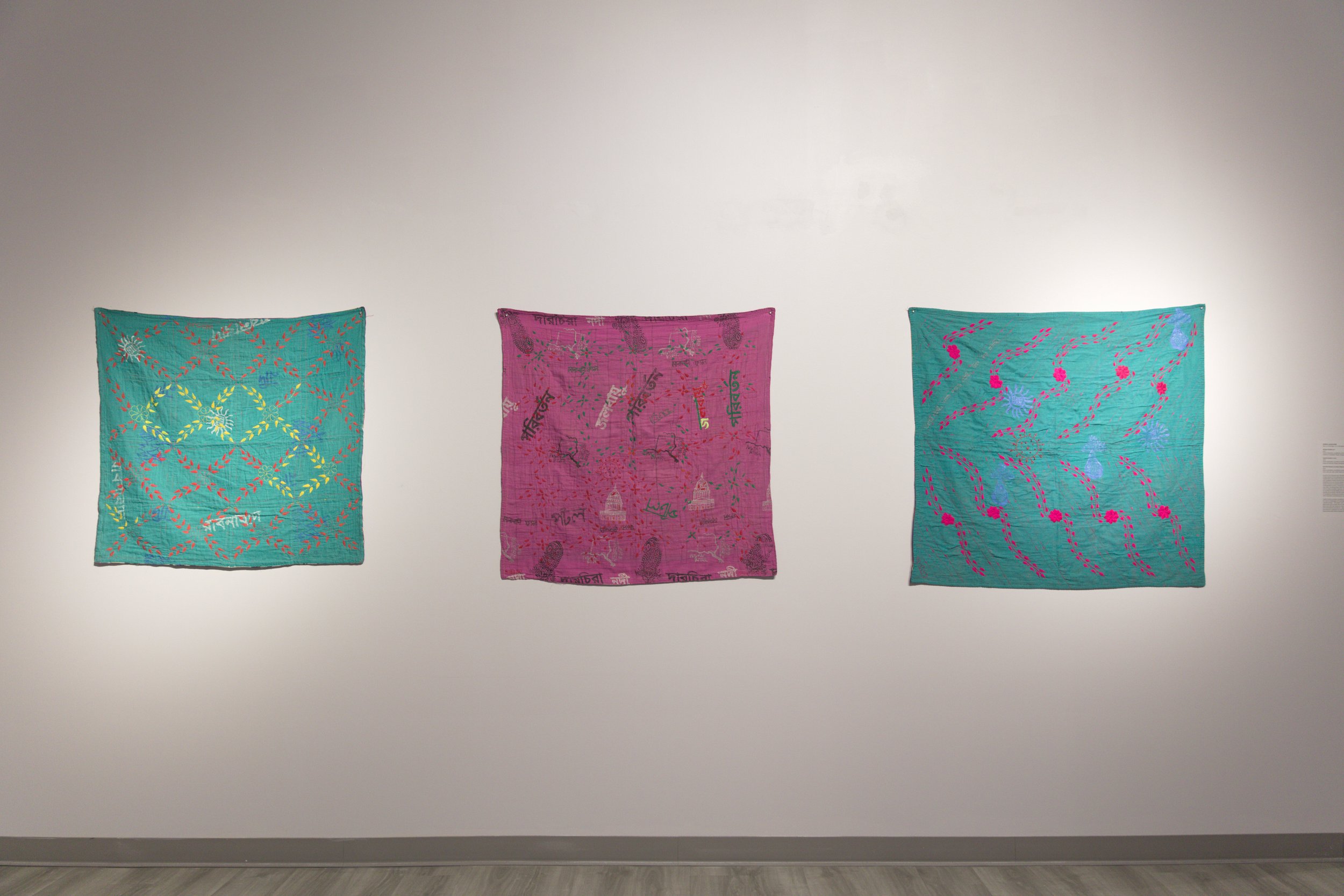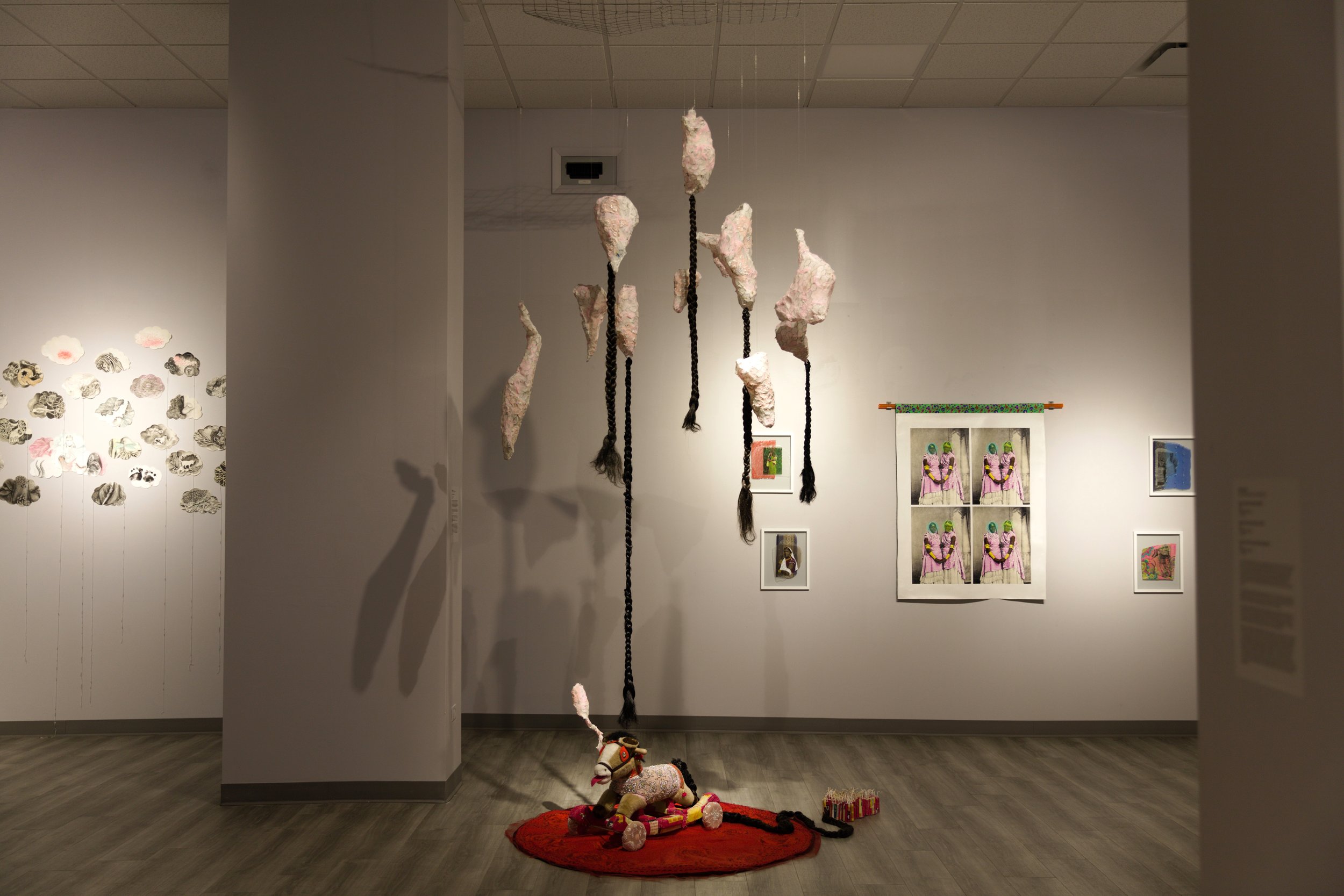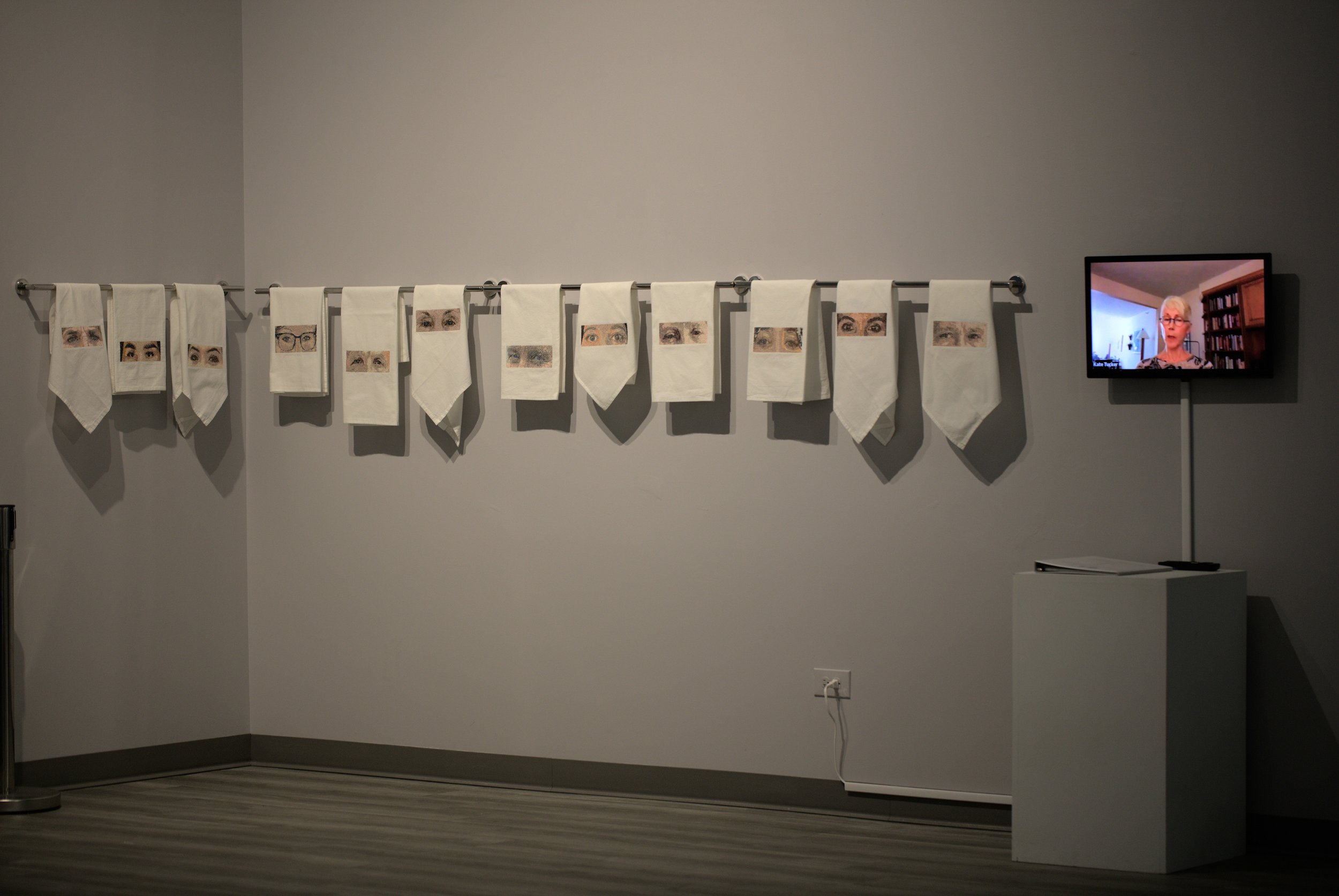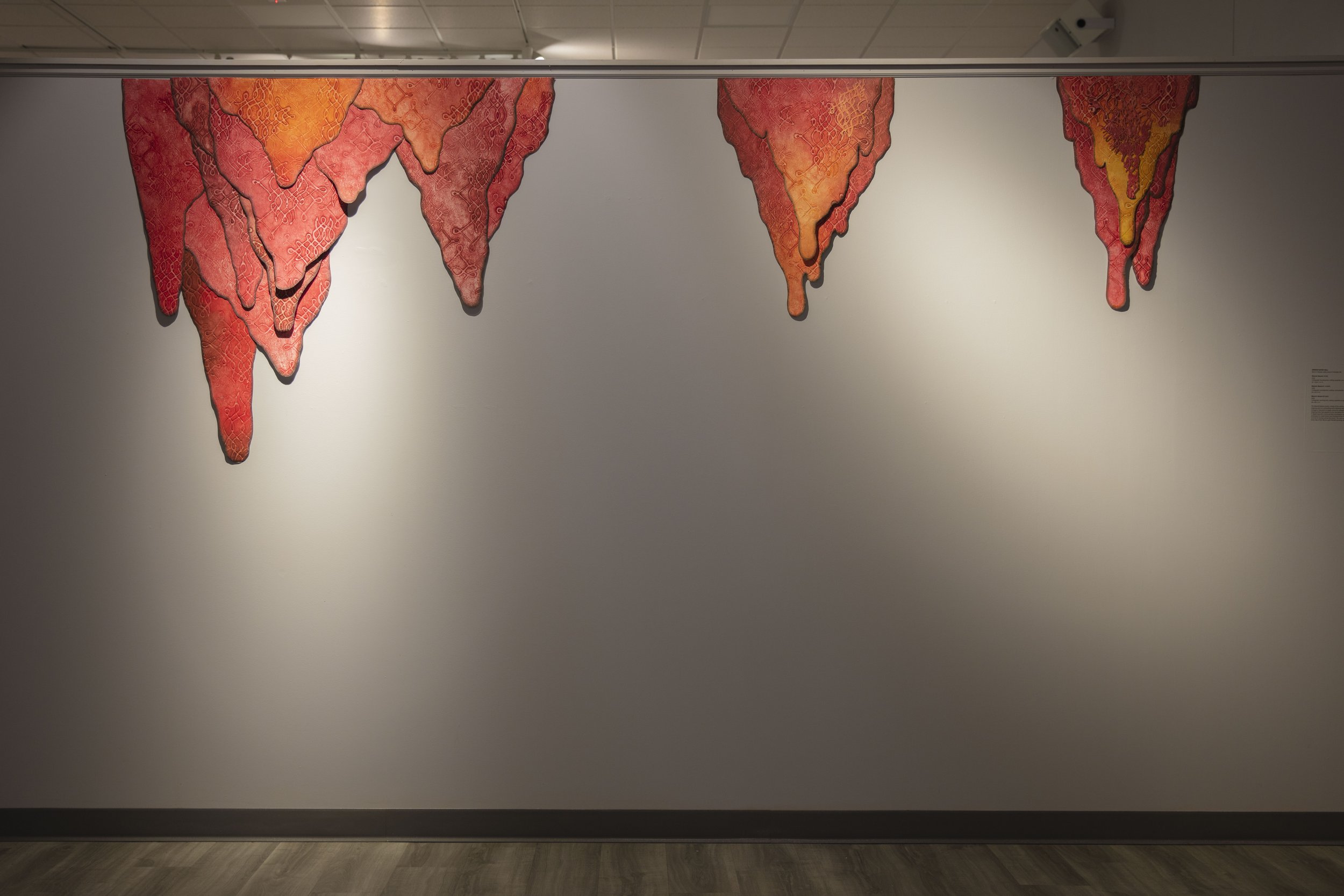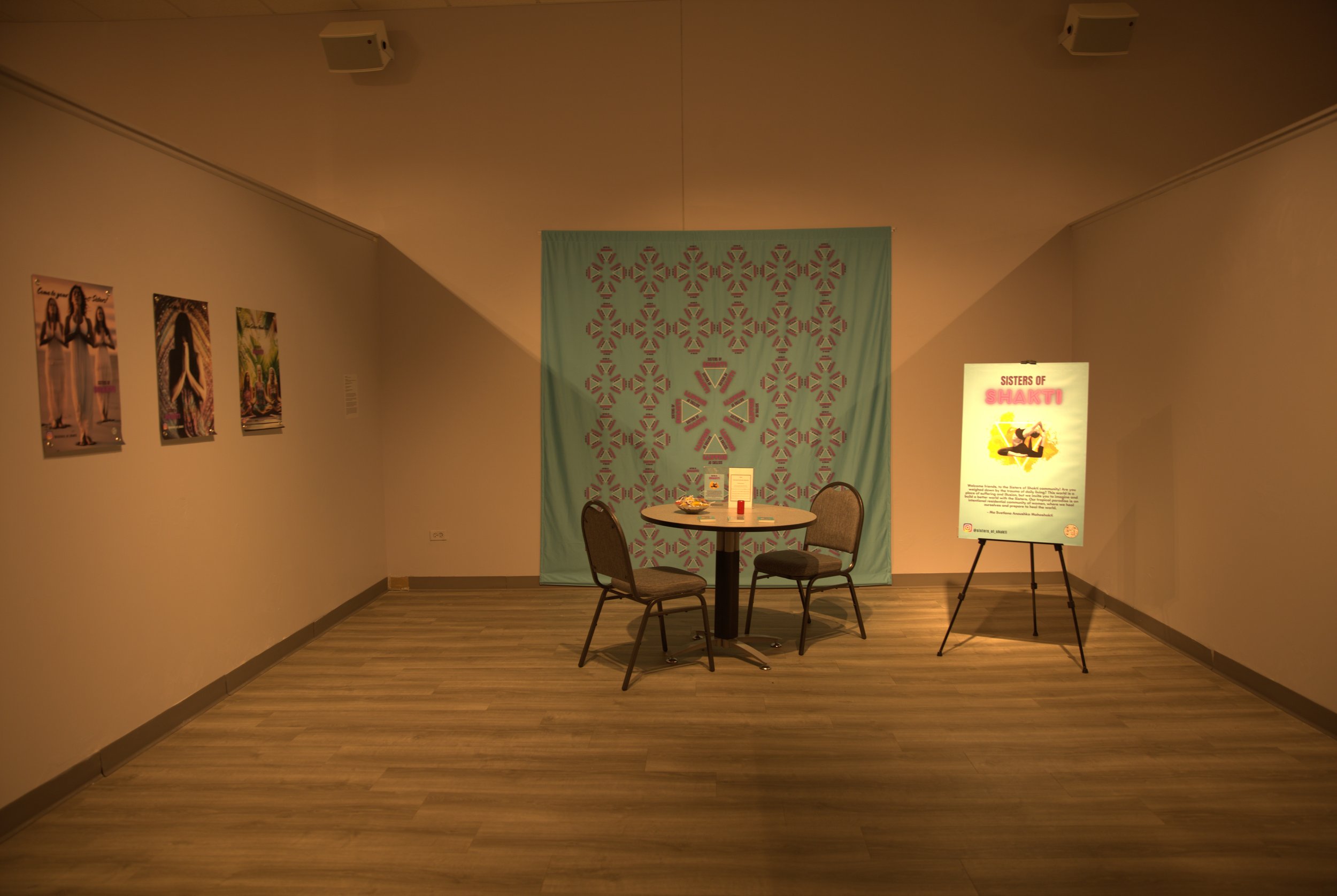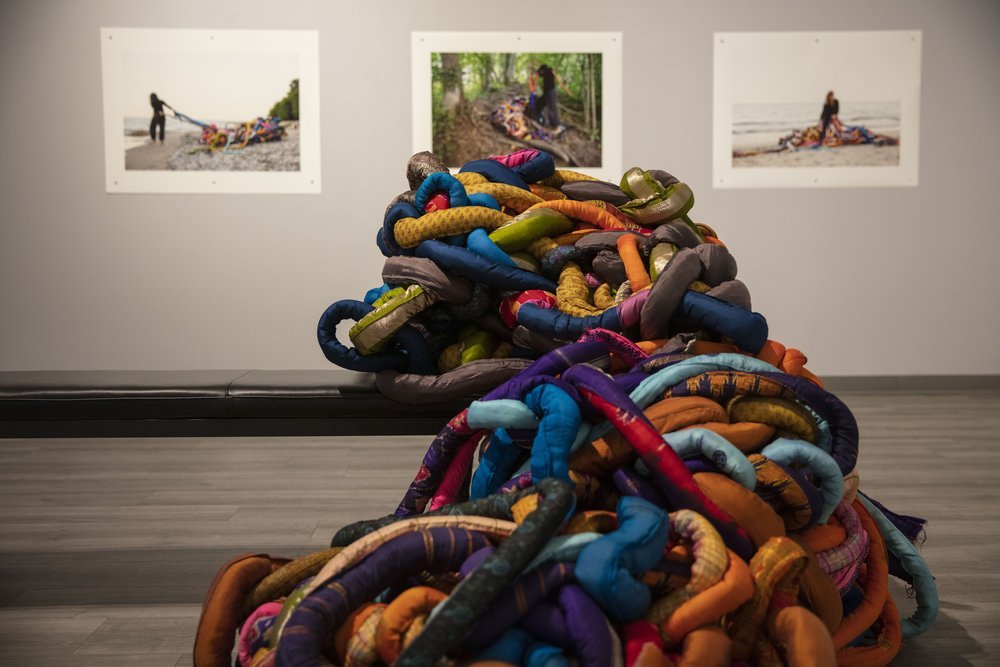The Paglees
On view since January 19, 2024 at the South Asia Institute, the Paglees: Between Reason and Madness, is the debut exhibition by the Paglees, a feminist collective of artists of South Asian origin living across the United States. Paglee or pagli means crazy woman in a number of South Asian languages. The Paglees are: Fawzia Khan, Indrani Nayar-Gall, Monica Jahan Bose, Nirmal Raja, Pallavi Sharma, Renluka Maharaj, and Shelly Bahl.
Featuring mixed-media works on paper, fabric, and canvas, sculpture, performance, photography, installation, and moving image, The Paglees: Between Reason and Madness, questions and reframes the labeling of non-conforming women as crazy and the marginalization of immigrant women of color.
We sat down with the Paglees, to know more about their craft and their exhibition. Here's what they had to say:
Who are the Paglees, and what inspired all of you to come together and form a collective?
Dispersed across the USA, the Paglees are a collective of seven immigrant feminist women artists of South Asian ethnicity/origin with ancestral roots in Bangladesh, India, Pakistan, and Trinidad & Tobago. Our present locations are California, Colorado, Minnesota, New York, North Carolina, Washington DC, and Wisconsin.
Over the years some of us became acquainted with each other either through South Asian collective exhibitions or other physical/virtual meeting opportunities to invest time with each other and exchange ideas. The COVID-19 lockdown prompted some of us to start zoom meetings around mid-2020. We called that meeting Art Chat. It expanded. With the fellowship and sharing of ideas ranging from issues of personal well-being, individual art practices, to discussing the national scene, our camaraderie grew stronger, and so did a vision for the future direction of the group. The Paglees collective, presently seven members, is the fruit of that fellowship.
Why did you choose the "Paglees" as the name for the collective, and how does it embody your ethos and body of work?
We discussed and debated for a long time what we should call ourselves. We looked at several words that applied to nonconforming and rebellious women and agreed on “Paglee” because it is used in many South Asian languages and communities, including the Caribbean. “Paglee” means crazy woman, and is the feminine form of “pagal/ pagol.” The word is often derogatory but is also used affectionately for someone a bit eccentric or wild or nonconformist. We are not crazy; our patriarchal world discriminates against and oppresses women, especially immigrant women of color. Women are expected to conform to gendered roles. In various cultures, women who don’t conform have been called mad or hysterical. We question that labeling and are reframing and reclaiming the word Paglee for its fierceness and willingness to go against the grain, by challenging gender expectations. We, the Paglees, are brown women of the Global South and our artwork centers our reason and wisdom toward a visionary feminist future.
This marks the first time the Paglees are exhibiting your works together. How does this collective showcase make you all feel, considering the diversity within your group?
Not only was this our first exhibition as a collective, but it was also the first time some of us were meeting in person. We had previously met over Zoom and selected the works based on images, so to see it all come together in the space was amazing. It was also validating to see how the works complemented each other in terms of content, form, and color despite the wide range of media presented. For those of us who were able to attend the opening, there was a deepening relationship as we got to spend time installing the show, talking about our work, and getting to know each other better. It is gratifying to be able to share this work in an art center such as SAI which values “community and inclusion, creativity and artistic excellence, collaboration and innovation.”
What, in your opinion, defines an artwork as feminist? How do your individual and collective works contribute to a feminist discourse?
An artwork can be feminist if it’s informed by a feminist worldview of creating gender equality and challenging gender stereotypes. As diasporic artists with origins in the South Asian subcontinent, we are also invested in challenging historical and contemporary Western feminism. As racialized feminists, we are committed to intersectionality that takes into consideration the unique challenges and perspectives of women from the Global South.
For the artists in the Paglees, we are all first-generation immigrants to the United States. Some of us have multiple national identities, and this diasporic condition is core to these art practices. Others have strong ties back in South Asia and these artworks address social and political conditions affecting women in the motherland.
Some of us take the artistic journey inwards and others look out at the larger world, but we are all committed to contributing to the diversity of feminist perspectives and effecting change in the world. Our voices, as well as the voices of so many past and present marginalized women, are often silenced, but through our collective art projects we will be heard.
Collaboration is a central ethos of your collective. How do seven different minds of artists collaborate constructively, ensuring that you all can work together effectively while also caring for each other?
The collective voice is louder than individual voices and we see many parallel and overlapping explorations in each other’s work that are important to be seen and heard. Right from when we formed the group to our exhibition launch at SAI, the Paglees worked collaboratively. This includes coming up with the collective name and identity. When our mission and goals align, everything else falls into place as we all are working towards the growth of the collective as a whole. Some have louder voices than others but we always give space to each person’s views and vote on the most important decisions. Each exhibition will have one person leading the logistics with the whole group’s input and goals in mind. Touring the exhibition, artwork choices, exhibition layout, social media posts, and graphics, all these decisions are made collaboratively. Some have more experience in certain areas than others and some have more contacts than others and we lean on that. With this approach, we hope to cast a wider net and have a stronger impact.
Caring for each other is also an important part of why we came together. We are here to support each other in sisterhood as artists and women. We recognize that it may not always be easy to work together as we are all strong-minded individuals with intensive art practices. But we hope to be able to nurture an ethic of care and collaboration that is inclusive and positive.
Is there anything you would like to add? What have you learned from each other?
We are learning so much from each other and about how to shape this collective. As one Paglee says: “I have never been part of a collective before and never imagined I would be part of any group. However, when this opportunity presented itself I really wanted to push myself and experience a more intense collaboration within a group. There are a lot of voices but it works out in the end. It’s been a joy to experience being a part of something larger. Paglees Rule!”
